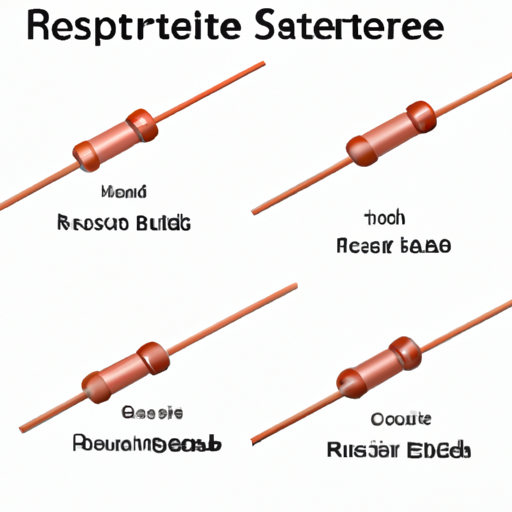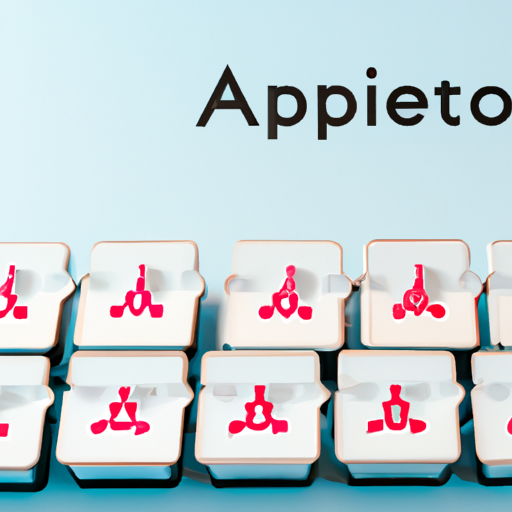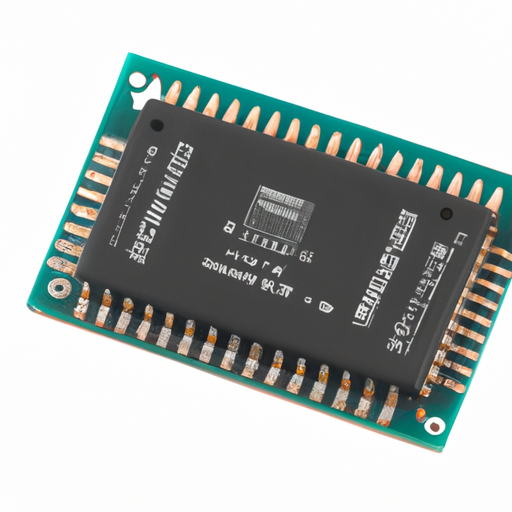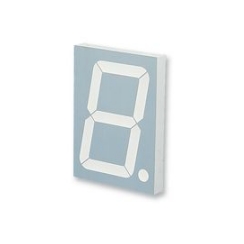What are the product standards for resistor L?
What are the Product Standards for Resistor L?
I. Introduction
In the world of electronics, resistors play a crucial role in controlling the flow of electric current. Among the various types of resistors, Resistor L stands out due to its unique characteristics and applications. This blog post aims to explore the product standards associated with Resistor L, emphasizing their importance in ensuring quality, safety, and reliability in electronic components. We will delve into the technical specifications, types, key standards, testing processes, challenges, and future trends related to Resistor L.
II. Understanding Resistor L
A. What is Resistor L?
Resistor L is a specific category of resistors characterized by its linear resistance properties. It is designed to provide a consistent resistance value across a range of operating conditions. The technical specifications of Resistor L typically include resistance value, tolerance, temperature coefficient, power rating, and voltage rating. These specifications are critical for ensuring that the resistor performs as intended in various electronic circuits.
B. Common Applications
Resistor L is widely used in various applications, including:
Signal Conditioning: In audio and communication systems, Resistor L helps in signal processing by controlling the amplitude of signals.
Voltage Division: It is often used in voltage divider circuits to obtain a desired voltage level.
Biasing: In transistor circuits, Resistor L is used for biasing to ensure proper operation of the device.
C. Types of Resistor L
1. **Fixed Resistors**: These resistors have a constant resistance value and are commonly used in applications where precise resistance is required.
2. **Variable Resistors**: Also known as potentiometers, these allow for adjustable resistance, making them suitable for applications like volume control in audio devices.
3. **Specialty Resistors**: This category includes resistors designed for specific applications, such as thermistors for temperature sensing or photoresistors for light detection.
III. Importance of Product Standards
A. Ensuring Quality and Reliability
Product standards are essential for ensuring that Resistor L meets specific quality and reliability criteria. These standards help manufacturers produce components that perform consistently and safely over time, reducing the risk of failure in electronic devices.
B. Facilitating International Trade
In a globalized market, adherence to recognized product standards facilitates international trade. Manufacturers that comply with these standards can market their products more effectively across borders, ensuring that they meet the expectations of customers and regulatory bodies in different countries.
C. Enhancing Safety and Performance
Product standards play a vital role in enhancing the safety and performance of electronic components. By adhering to established guidelines, manufacturers can minimize the risk of electrical hazards, ensuring that Resistor L operates safely within its specified limits.
D. Compliance with Regulatory Requirements
Many countries have regulatory requirements that mandate compliance with specific product standards. Meeting these standards is crucial for manufacturers to avoid legal issues and ensure that their products can be sold in various markets.
IV. Key Product Standards for Resistor L
A. International Electrotechnical Commission (IEC) Standards
The IEC develops international standards for electrical and electronic devices. Relevant IEC standards for Resistor L include:
IEC 60115: This standard outlines the general requirements for fixed resistors, including performance, testing methods, and reliability.
IEC 60068: This standard covers environmental testing, ensuring that resistors can withstand various environmental conditions.
B. American National Standards Institute (ANSI) Standards
ANSI standards are crucial for ensuring the quality and safety of electronic components in the United States. Specific ANSI standards for Resistor L include:
ANSI/IEEE C57.12.00: This standard provides guidelines for the performance and testing of resistors used in electrical equipment.
ANSI/IEC 60115-1: This standard specifies the general requirements for resistors, including testing methods and performance criteria.
C. Institute of Electrical and Electronics Engineers (IEEE) Standards
IEEE standards are widely recognized in the electronics industry. Relevant standards for Resistor L include:
IEEE 1149.1: This standard addresses boundary-scan testing, which can be applied to resistors in integrated circuits.
IEEE 802.3: While primarily focused on networking, this standard includes specifications for resistors used in Ethernet applications.
D. Other Relevant Standards
1. **RoHS Compliance**: The Restriction of Hazardous Substances (RoHS) directive limits the use of specific hazardous materials in electronic components, including Resistor L.
2. **REACH Regulations**: The Registration, Evaluation, Authorisation, and Restriction of Chemicals (REACH) regulations ensure that chemicals used in manufacturing are safe for human health and the environment.
3. **ISO Standards**: The International Organization for Standardization (ISO) develops standards that cover various aspects of manufacturing and quality management, which are applicable to Resistor L.
V. Testing and Certification Processes
A. Overview of Testing Methods for Resistor L
To ensure compliance with product standards, Resistor L undergoes various testing methods, including:
1. **Electrical Testing**: This involves measuring the resistance value, tolerance, and power rating to ensure that the resistor meets its specified performance criteria.
2. **Environmental Testing**: Resistors are subjected to various environmental conditions, such as temperature and humidity, to assess their reliability and performance under real-world conditions.
3. **Mechanical Testing**: This testing evaluates the physical durability of resistors, including their ability to withstand mechanical stress and vibration.
B. Certification Bodies and Their Roles
Several certification bodies play a crucial role in the testing and certification of Resistor L:
1. **UL (Underwriters Laboratories)**: UL provides safety certification for electronic components, ensuring that they meet specific safety standards.
2. **CSA (Canadian Standards Association)**: CSA certifies products for compliance with Canadian safety standards, including those for resistors.
3. **TUV (Technischer Überwachungsverein)**: TUV offers testing and certification services for various electronic components, ensuring compliance with European standards.
VI. Challenges in Meeting Product Standards
A. Variability in Manufacturing Processes
Manufacturers often face challenges related to variability in their production processes, which can affect the consistency and quality of Resistor L. Implementing strict quality control measures is essential to mitigate these issues.
B. Technological Advancements and Evolving Standards
As technology advances, product standards must evolve to keep pace with new developments. Manufacturers must stay informed about changes in standards and adapt their processes accordingly.
C. Cost Implications for Manufacturers
Meeting product standards can involve significant costs for manufacturers, including investments in testing equipment, certification processes, and compliance measures. Balancing these costs with competitive pricing is a challenge for many companies.
D. Globalization and Standardization Issues
In a global market, manufacturers must navigate different standards and regulations in various countries. Achieving standardization across borders can be complex, requiring collaboration between international organizations and regulatory bodies.
VII. Future Trends in Resistor L Standards
A. Emerging Technologies and Their Impact on Standards
The rise of new technologies, such as IoT (Internet of Things) and AI (Artificial Intelligence), is likely to influence the development of product standards for Resistor L. Manufacturers will need to adapt to these changes to ensure compliance and performance.
B. Sustainability and Environmental Considerations
As sustainability becomes a priority in manufacturing, product standards for Resistor L will increasingly focus on environmental impact. This includes the use of eco-friendly materials and processes that minimize waste and energy consumption.
C. The Role of Digitalization in Standard Compliance
Digitalization is transforming the way manufacturers approach compliance with product standards. Advanced data analytics and automation can streamline testing and certification processes, making it easier for companies to meet regulatory requirements.
VIII. Conclusion
In conclusion, product standards for Resistor L are essential for ensuring quality, safety, and reliability in electronic components. As technology continues to evolve, manufacturers must prioritize compliance with these standards to remain competitive in the global market. By understanding the importance of product standards and the challenges associated with meeting them, stakeholders can work together to enhance the performance and safety of Resistor L in various applications.
IX. References
- International Electrotechnical Commission (IEC) Standards
- American National Standards Institute (ANSI) Standards
- Institute of Electrical and Electronics Engineers (IEEE) Standards
- RoHS Compliance Guidelines
- REACH Regulations
- ISO Standards Publications
This blog post provides a comprehensive overview of the product standards for Resistor L, highlighting its significance in the electronics industry and the ongoing challenges and trends that manufacturers face. By adhering to these standards, manufacturers can ensure that their products meet the expectations of consumers and regulatory bodies alike.







